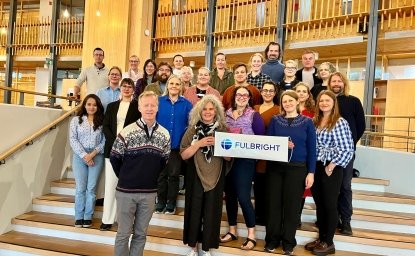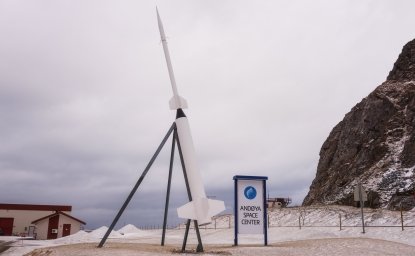No. 8 | Applying an Arctic Economic Lens to Investments in Connectivity
The views and opinions expressed are those of the authors and do not necessarily reflect positions of the Polar Institute.

A blog of the Polar Institute
The views and opinions expressed are those of the authors and do not necessarily reflect positions of the Polar Institute.

In 2020, as the COVID-19 pandemic drove people to stay home as much as possible, demand for high-speed Internet skyrocketed. So, too, did awareness of the challenges of extending that connectivity to those with limited or no existing access. National news stories circulated of children being unable to connect to online classes, of remote workers scrambling to get sufficient bandwidth at home to do their jobs, and of healthcare providers quickly scaling up existing telehealth services or implementing new ones. In all this, there was little public discussion about the unique challenges of delivering connectivity to communities in the North American Arctic. Among challenges unique to the North American and Russian Arctic are remote locations, harsh climates, difficult terrain, low population density and a lack of large businesses to serve as anchor tenants for major connectivity development projects.
Telecommunications companies in the North American Arctic had to overcome these challenges quickly in order to better serve the students in the region. As NCTA, the Internet & Television Association, notes in a recent article, telecoms and cable internet providers had to develop new services and partnerships with school districts to close the digital divide and increase broadband equity in the Arctic during COVID. NCTA joined with EducationSuperHighway on the K-12 Bridge to Broadband Program, while NCTA members in the Arctic have introduced new solutions, such as GCI’s Local Access, which enables schools to extend their connectivity to students’ homes. In Canada, telecoms such as Northwestel accelerated fiber-to-the-home rollouts to meet increased demand for connectivity at home, and the government of Nunavut provisioned 4G Turbo Sticks for students and teachers in lockdown in remote communities. Such innovative connectivity solutions would not be possible, however, without significant investment in communications infrastructure. For that, we need to return to the challenges previously listed and consider how they impact investment decisions.
Businesses cannot approach investment in the Arctic with the same set of assumptions used in the rest of the world. When operating in this region, a unique Arctic economic lens must always be applied. This lens includes the challenges above, as well as an awareness of the nuances of the social, cultural, and political climate in each of the eight Arctic nations. Such a lens would be incomplete if it did not include the rights, needs, and knowledge of Indigenous communities in the location of the investment. This lens would also be incomplete without environmental considerations, which demand that businesses consider the impact of development projects on the environment and on the subsistence lifeways of Indigenous communities in the Arctic.
All of this points to the fact that the business cases for investment in Arctic connectivity must be built on alternate foundations. Multiple investment models should be considered when investors or stakeholder groups plan to build connectivity infrastructure in low population density areas, where modest residential revenues will be incapable of covering the high costs of engineering a network to overcome the challenges illuminated above. In such cases, it becomes necessary to pursue alternate funding models, such as the anchor tenant model, which can bolster business cases by providing reliable streams of revenue from large customers in various sectors, such as healthcare, education, or government.
Over the past two years, the Arctic Economic Council’s Connectivity Working Group (CWG) has studied the other funding models and assessed their viability in the Arctic. In particular, we have focused on combinations of private investment with public funding sources, such as grant, loan, and subsidy programs. What we found is that combining private investments with public funding can have profound impacts on the long-term financial sustainability of connectivity infrastructure projects. On the whole, such programs improve the business case for construction in the Arctic, especially in remote regions and to underserved communities.
However, each type of funding comes with its own set of considerations. Take the example of a telecommunications provider that received a design-build-operate subsidy from the Canadian government to bring connectivity to remote communities in Nunavut. This type of private-public collaboration has provided benefits to education, healthcare and residential broadband by leveraging the common infrastructure for different customers and providers, whose services depend on the continued operational subsidy from the government. We provide this example as a key finding: for all telecommunications developments in the Arctic, stakeholders should work together with local communities, network providers, and policymakers to create sustainable long-term Arctic connectivity infrastructure.
Our full findings are enumerated in our 2021 report, which can be found on the Arctic Economic Council’s website.

Since its inception in 2017, the Polar Institute has become a premier forum for discussion and policy analysis of Arctic and Antarctic issues, and is known in Washington, DC and elsewhere as the Arctic Public Square. The Institute holistically studies the central policy issues facing these regions—with an emphasis on Arctic governance, climate change, economic development, scientific research, security, and Indigenous communities—and communicates trusted analysis to policymakers and other stakeholders. Read more



